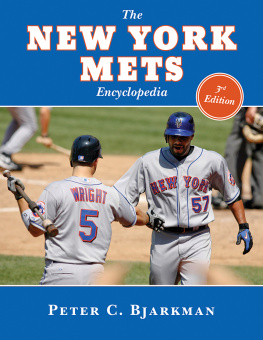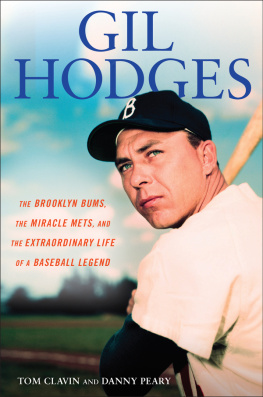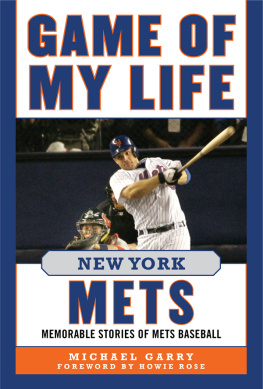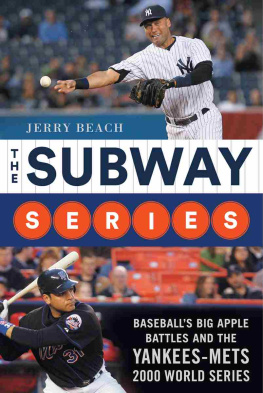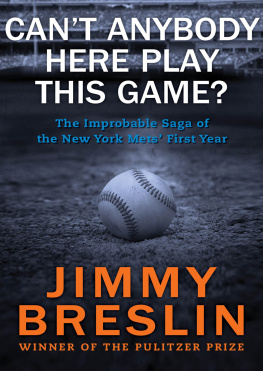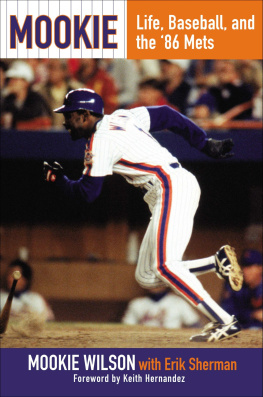The Baseball Talmud
TAKING THE
FIELD
A Fans Quest to Run the Team He Loves
Howard Megdal

Copyright 2011 by Howard Megdal
All rights reserved. No part of this book may be used or reproduced in any manner whatsoever without written permission from the publisher except in the case of brief quotations embodied in critical articles or reviews. For information address Bloomsbury USA, 175 Fifth Avenue, New York, NY 10010.
Published by Bloomsbury USA, New York
All papers used by Bloomsbury USA are natural, recyclable products made from wood grown in well- managed forests. The manufacturing pro cesses conform to the environmental regulations of the country of origin.
LIBRARY OF CONGRESS CATALOGINGINPUBLICATION DATA HAS BEEN APPLIED FOR.
ISBN: 9781608195794
First U.S. Edition 2011
1 3 5 7 9 10 8 6 4 2
Typeset by Westchester Book Group
Printed in the U.S.A. by Quad/Graphics, Fairfi eld, Pennsylvania
To Mirabelle, a five-tool baby, and Rachel,
the Tom Seaver of wives.
Ill never trade either of you.
CONTENTS
Chapter 1
Chapter 2
Chapter 3
Chapter 4
Chapter 5
Chapter 6
Chapter 7
Chapter 8
Chapter 9
Chapter 10
Chapter 11
Chapter 12
Chapter 13
Chapter 14
Chapter 15
Chapter 16
Chapter 17
I use OPS+ and ERA+ throughout the text. OPS+ is, simply, on-base percentage plus slugging percentage, but normalized to reflect effects of that players era (in 1968, offense was far scarcer than in 1998) and home ballpark (hitting in Coors Field is much easier than hitting in PETCO Park). A rating of 100 is average; above 100 is above average.
The same is true for ERA+ in terms of park and era, only with earned run average instead of OPS. Incidentally, an ERA+ above 100 is also above average.
Chapter 1
WE ARE THE FANS WEVE
BEEN WAITING FOR
I N RETROSPECT , all the years I didnt run for general manager of the New York Mets seem absurd.
It was strange to think of myself, a father, an adult, wishing so fervently for my team to improve and not having the courage to do anything about it. I wondered how I could have lived so long with this urge for a championship while never once asking myself what I could do. But leave those matters aside for a moment. Where did this call to public service, my campaign to become GM of the baseball team Id reported on for much of my adult life (and loved since age six), come from? Not from a single place, or a lone idea, or one particular time the Mets made a decision that led to the unique heartbreak of baseball, spread unequally over 162 games with a payoff of sorrow at seasons end.
It began in many places. I started my run for GM on trips to my fathers office as a child. Asked to draw a picture while he worked, writing briefs and making calls, Id draw a mock-up of Shea Stadium, placing names and statistics at the various positions, listing the starting staff on the mound and adding bullpen names like Franco, Innis, and Musselman beyond the crayon-built left-field wall.
I also began to run for GM during dark winter nights, laptop open, looking to reverse the fortunes of my favorite ballclub into the future. I filled the void of the off-season with a program called Baseball Mogul, which allows you to take control of a baseball team in any year from 1901 to the present, simulating games, making roster changes, and winning imaginary championships.
Sometimes this tool would let me reach into the past instead, taking control of the Dwight Gooden/Darryl Strawberry Mets and keeping them out of trouble, or wresting the reins from M. Donald Grant in the 1970s, giving Shea Stadium an offense to go along with stellar starting pitching and, most important: never trading Tom Seaver or Nolan Ryan.
But I think the need to run for general manager manifested itself when I began to think of the effect the Mets were having on my loved ones. Back in 2006, a year before I began to cover the Mets, my wife, Rachel, and I were ordinary spectators for Game 7 of the National League Championship Series. Wed managed to score tickets in the uppermost reaches of Shea Stadiums left-field stands, our view of the field partially obstructedindeed, we only heard Endy Chavezs epic catch in front of the AIG sign. A brief silence befitting a backbreaking home run gave way to as thunderous a response as Shea ever emitted.
Of course, we know now that the Mets had only delayed their expirationat the time, Endys catch seemed like an omen. But for Rachel, who attended more games in 2006 than she had in her life previous to that, the joy experienced from her single year of true fandom gave me new perspective on what it meant to love a team.
And worse, in the parking lot after that game, this sport, described by the great A. Bartlett Giamatti as a game designed to break your heart, made my wife cry.
That is what baseball means to those who are lucky enough to follow it. It isnt merely a sport. Baseball takes hold of your life in a way that no other pursuit can. The schedule guarantees you 162 games a year at roughly three hours a popand on some nights, gloriously more.
And for the baseball fan, this is merely entry-level obsession. Hours and hours are spent talking about the game, reading about the game, shopping for merchandise to properly express love for the game, dreaming about the game. (Yes, I frequently have dreams in which I see the Mets choose to bring the wrong reliever into a tight eighth-inning situation.)
Look at it this way: The world expects us to love our mothers. But if we spent the same amount of time in conversation with our mothers, reading about them, wearing T-shirts with their pictureswed be institutionalized.
I think it was the birth of my daughter that truly illuminated the need for me to internalize this level of engagement and led me to the only possible response to it: running for general manager of the New York Mets. From the moment of her birth, even before it, Id strategized the many ways Id share the gift of baseball with her. But a different question presented itself as I recalled the many disappointments Id experienced as a Mets fan: Exactly how good would the baseball I shared with her be? And what could I do to make it better?
The last few years have not been kind to New York Mets fans. Astoundingly, that 2006 season, which ended with Carlos Beltran striking out with the bat on his shoulder, costing the Mets a trip to the World Series in front of a jam-packed Shea Stadium, was the best year weve had in a decade.
Those familiar with the team need not hear these grisly details. A 2007 collapse, losing a seven-game lead with seventeen games to play. An encore in 2008, a three-and-a-half-game lead blown with seventeen to play. (What a poor tribute to Keith Hernandez, whose number 17 will be retired once I am in charge.) A 2009 with injuries that made the Black Death seem tame. Only one in three Europeans died from the plague (33 percent), while twenty of the twenty-five Mets on the opening-day roster spent time on the disabled list (80 percent).
Despite this recent run, there wasnt any question as to which New York team my daughter would root forthe Yankees simply were not an option. Teaching her to tie her fortunes to a team that spends far more money than any other in baseball, entering each season expecting to be served a championship without putting in any investment, would run counter to everything we want to teach her about life.
Nor would either side of the family abide it. My father was a Brooklyn Dodgers fan before becoming true to the orange and blue. And I heard about the Holocaust before I heard about the Dodgers leaving Brooklynclearly, he thought I could handle the former at a younger age.
Next page

